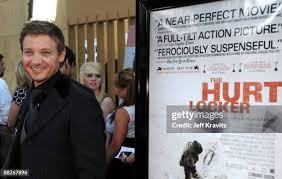An In-depth Look at The Hurt Locker

Introduction
The Hurt Locker, directed by Kathryn Bigelow and released in 2008, stands as a pivotal film in the war genre and a touchstone for discussions surrounding the Iraq War. Its raw and gritty portrayal of soldiers in the face of danger not only garnered critical acclaim but also stimulated ongoing conversations about the psychological impacts of warfare. This article will delve into the significance of The Hurt Locker, its themes, and its relevance to contemporary audiences.
Overview and Themes
The narrative follows an elite bomb disposal team in Iraq, focusing on Sergeant First Class William James, played by Jeremy Renner. The film is renowned for its intense and immersive depiction of the daily perils faced by soldiers, showcasing their struggle not just with the enemy, but also with their own inner demons. Key themes include the adrenaline rush of combat, the psychological toll of war, and the complex nature of heroism. Critics have praised The Hurt Locker for its realistic portrayal of soldier life and the moral ambiguities inherent in warfare.
Critical Reception and Awards
The Hurt Locker received widespread acclaim upon its release, winning six Academy Awards, including Best Picture and Best Director, making Bigelow the first woman to win the Oscar for Best Director. The film was acclaimed for its editing, sound design, and performances, particularly Renner’s portrayal of a man who thrives on the chaos of war. It has often been hailed as a definitive portrayal of the Iraq War, standing in contrast to more romanticised representations of military action.
Significance for Modern Audiences
In the years since its release, The Hurt Locker has continued to resonate with viewers, serving as a stark reminder of the realities faced by service members. As new conflicts arise and the landscape of warfare evolves, the film invites audiences to critically engage with the nature of combat and its lasting effects on individuals. It compels viewers to empathise with soldiers, urging a deeper understanding of the sacrifices made and the psychological ramifications of war.
Conclusion
The Hurt Locker remains a significant film in the canon of modern cinema, helping to shape the discourse around war films in the 21st century. Its unflinching gaze into the experiences of soldiers offers an important perspective that continues to resonate with audiences today. As we reflect on the themes presented, it serves as a poignant reminder of the complexities of warfare and the human cost that accompanies conflict, making it essential viewing for those wishing to understand the multifaceted nature of military service.









